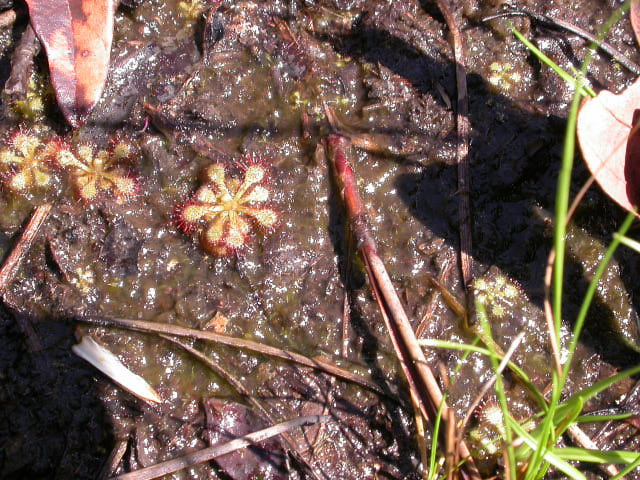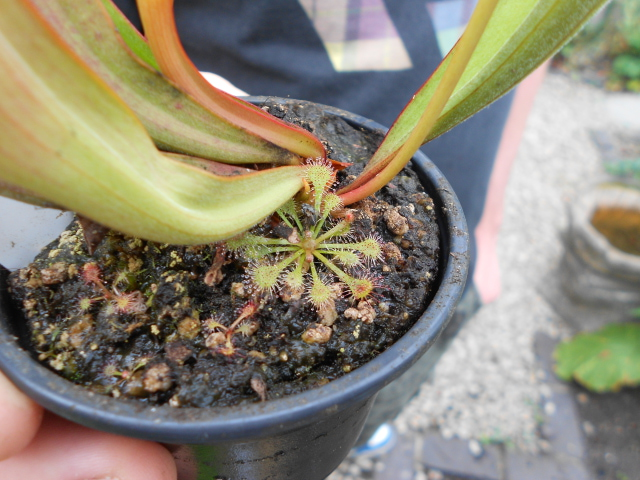QuestionQUESTION: Hello, I recently purchased a Sarracenia oreophila x minor from a specialist nursery in England, and in the pot are no less than three Drosera seedlings with a lovely round shape to them.
I am therefore after a definitive identification just out of curiosity. I immediately thought rotundifolia, but now I am leaning towards capillaris. I also considered spatulata but I think the leaves are too round for that.
If it is capillaris, I am aware that they don't truly go dormant and don't form hibernaculas, so over the English winter what care do you suggest - will they tolerate a dormancy even if though don't need it?
Thanks, Chris.
 Drosera capillaris
Drosera capillaris
ANSWER: Hi Chris,
Drosera capillaris is usually considered an annual. They may or may not survive winter. The best thing to do is collect seeds, and distribute them in pots where you would like them. They will germinate in spring. Chances are you will have PLENTY of these. They can be very prolific.
Good Growing!
Jeff Dallas
Sarracenia Northwest
http://www.growcarnivorousplants.com
---------- FOLLOW-UP ----------
 Drosera
Drosera
QUESTION: Thanks for your answer. I intended to post a photo of the sundew in question to help with identification, but I had realised that I had forgot to attach it after I had sent the question! So here is the photo.
I had posted the same photo on an English carnivorous plant forum and the general opinion was that it was D. Spatulata, or D. x Tokaiensis, a hybrid of D. Spatulata and D. Rotundifolia. What do you think?
Regards, Chris.
AnswerHi Chris,
It could easily be either one of those, and now seeing the plant, I would say it's less likely to be capillaris. My vote would be D. spatulata since it is commonly old by nurseries, and it spreads seed readily. However, if you look at the crown of the plant closely (I can't tell in the photo), and you see a hairy center on the plant, it is more likely D. tokaiensis. If you let the plant get cold, and it it forms a hibernacula, then you know you have D. tokaiensis.
Good Growing!
Jeff Dallas
Sarracenia Northwest
http://www.growcarnivorousplants.com







